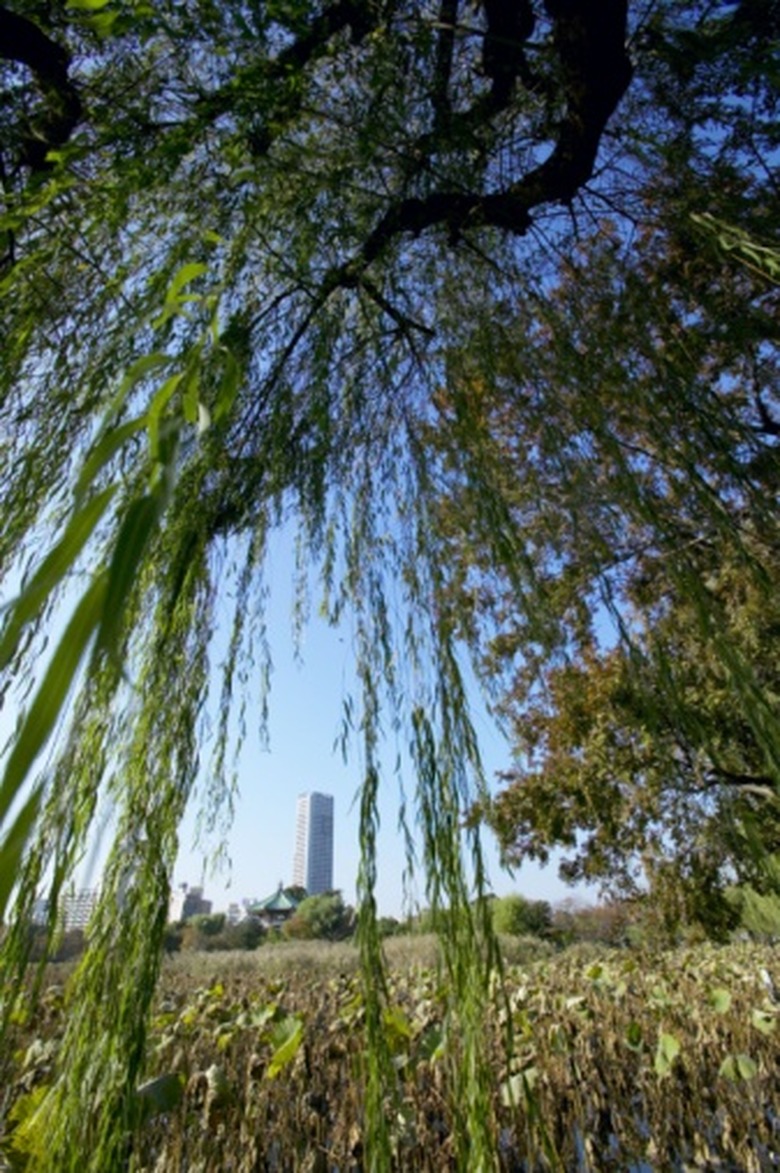Is The Weeping Willow Deciduous?
The weeping willow tree (Salix alba "Tristis") is native to China and now grows in many of the United States. The tree often reaches a height of 35 to 70 feet.
Identification
Deciduous trees are those whose leaves fall or are shed seasonally or due to a certain stage of development. The weeping willow tree is among those who share that trait. "Weeping willows are deciduous, the thin, three- to six-inch-long leaves turning yellow before falling," says the University of Florida's Institute of Food and Agricultural Sciences.
Significance
The Eastern Forest Environmental Threat Assessment Center indicates that the deciduous nature of the weeping willow means that the dropping leaves present a crush of organic matter around the tree. The decomposing leaves damage water quality and oxygen in the autumn, directly stressing nearby aquatic-based plants and animals.
- The weeping willow tree (Salix alba "Tristis") is native to China and now grows in many of the United States.
- The Eastern Forest Environmental Threat Assessment Center indicates that the deciduous nature of the weeping willow means that the dropping leaves present a crush of organic matter around the tree.
Effects
With long branches and leaves that often drape nearly to the ground, the tree is renowned for not only its unique aesthetic appeal, but also its decidedly cluttered after-effects. "It is a messy tree due to twig drop," notes the North Dakota State University Agriculture and Extension Departments.
Willow Trees And Weeping Willow Trees?
More than 100 species of willow grow within North America alone. It grows up to 50 feet tall and 40 feet wide. The tree's branches flow from the "weeping" branches to the ground, providing privacy both behind and directly beneath the tree. Like other members of the willow family, the weeping willow can be invasive in the wild. If the area in which you want to plant a tree or bush can't be kept consistently moist, or if a weeping willow is too large for your property, consider other willows. The bayberry willow (Salix myricoides), which grows up to 20 feet tall, and the prairie willow (Salix humilis), which grows between 2 and 8 feet tall, are both good candidates for sandy and dry conditions — quite the opposite of what weeping willows need. Salix trees and shrubs spread rapidly. In California, for example, no willow trees are currently on the state's Invasive Plant Inventory Database.
- With long branches and leaves that often drape nearly to the ground, the tree is renowned for not only its unique aesthetic appeal, but also its decidedly cluttered after-effects. "
- The bayberry willow (Salix myricoides), which grows up to 20 feet tall, and the prairie willow (Salix humilis), which grows between 2 and 8 feet tall, are both good candidates for sandy and dry conditions — quite the opposite of what weeping willows need.
